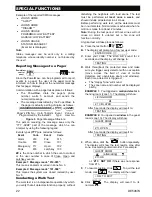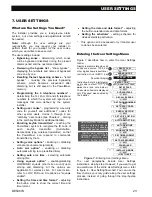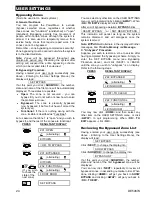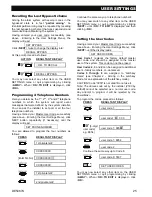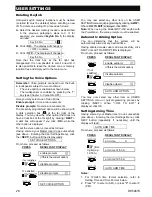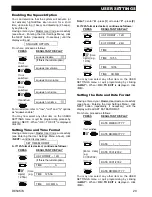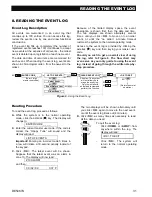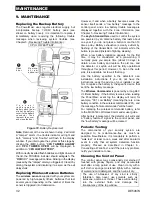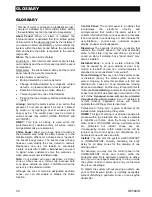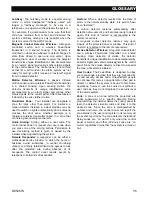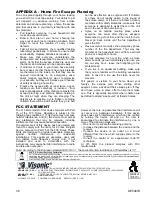
GLOSSARY
DE5467U
35
Latchkey:
The Latchkey mode is a special arming
mode in which designated "latchkey users" will
trigger a "latchkey message" to be sent to a
telephone or a pager when they disarm the system.
For example, if a parent wants to be sure that their
child has returned from school and disarmed the
system. Latchkey arming is only possible when the
system is armed in the AWAY mode.
Magnetic Contact Detector, Wireless:
A Magnet-
controlled switch and a wireless PowerCode
transmitter in a shared housing. The detector is
mounted on doors and windows to detect changes in
state (from closed to open and vice versa). Upon
sensing that a door or window is open, the detector
transmits its unique identification code accompanied
by an “alarm” signal and various other status signals
to the control panel. The control panel, if not armed
at that time, will consider the alarm system as “not
ready for arming” until it receives a “restored” signal
from the same detector.
Motion Detector, Wireless:
A passive Infrared
motion sensor and a wireless PowerCode transmitter
in a shared housing. Upon sensing motion, the
detector transmits its unique identification code,
accompanied by an alarm signal and various other
status signals to the control panel. After transmission,
it stands by to sense further motion.
Non-Alarm Zone:
Your installer can designate a
zone for roles other than alarm. For instance, a
motion detector installed in a dark stairway may be
used to switch on lights automatically when someone
crosses the dark area. Another example is a
miniature wireless transmitter linked to a zone that
controls a gate opening mechanism.
Quick Arming:
Arming without a user code. The
control panel does not request your user code when
you press one of the arming buttons. Permission to
use this arming method is given or denied by the
installer while programming the system.
Remote Responder:
A responder can be either a
professional service provider to which the home or
business owner subscribes (
a central monitoring
station
) or a family relation/friend who agrees to look
after the protected site during absence of its
occupants. The
control panel
reports events by
telephone to both kinds of responders.
Restore:
When a detector reverts from the state of
alarm to the normal standby state, it is said to have
been “restored”.
A
motion detector
restores automatically after
detection of movement, and becomes ready to detect
again. This kind of “restore” is not reported to the
remote
responders
.
A
magnetic contact detector
restores only upon
closure of the protected door or window. This kind of
“restore” is reported to the remote
responders
.
Smoke Detector, Wireless:
A regular smoke detector
and a wireless PowerCode transmitter in a shared
housing. Upon detection of smoke, the detector
transmits its unique identification code accompanied by
an alarm signal and various status signals to the
control
panel
. Since the smoke detector is linked to a special
fire zone
, a fire alarm is initiated.
User Codes:
The P is designed to obey
your commands, provided that they are preceded by
a valid security access code. Unauthorized people
do not know this code, so any attempt on their part to
disarm
or defeat the system is bound to fail. Some
operations, however, can be carried out without a
user code as they do not degrade the security level
of the alarm system.
Zone:
A zone is an area within the protected site
under supervision of a specific detector. During
programming, the installer allows the
control panel
to
learn the detector’s identity code and links it to the
desired zone. Since the zone is distinguished by
number and name, the control panel can report the
zone status to the user and register in its memory all
the events reported by the zone detector. Instant and
delay zones are “on watch” only when the control
panel is armed, and other (
24-hour
)
zones
are “on
watch” regardless of whether the system is armed or
not.


